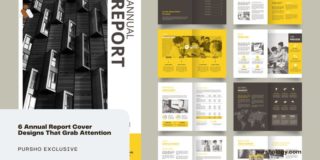The college students in my communication classes remind me that I’m a pretty big dork when it comes to talking about public speaking and rhetoric. I light up when talking about Aristotle the way other people light up when discussing their favorite celebrity or athlete. I have to work hard to convince them that Aristotle’s ideas are still relevant today even though his common topics were written around the 4th century BCE.
Despite the fact that we are creating multimedia presentations with incredible technology the likes of which Aristotle couldn’t have even dreamed, we can still benefit from his theories. Namely, his incredibly useful discussion of common topics. His system is particularly helpful if you find yourself sitting down to write your presentation but have absolutely no idea how to start. So today, we’ll be covering what he called konia or common topics as a way to jumpstart and write compelling presentation content.
What are common topics?
Aristotle had two categories for producing content around an argument or subject: common topics and special topics. Common topics could be used to discuss just about anything. They are universally applicable. That’s why they are so helpful. And that’s why they were used by Aristotle’s pupils back in the day and are still being used by students in 2021. Special topics, on the other hand, apply more to specific fields like politics or law. They are more context based. I’ll only be covering the common topics today.
So what are they? Aristotle’s 3 common topics, as defined Sharon Crowley and Debra Hawhee in their text Ancient Rhetorics for Contemporary Students, are:
- Conjecture: “whether a thing has (or has not) occurred or will (or will not) occur.”
- Degree: “whether a thing is greater or smaller than another thing.”
- Possibility: “what is (and is not) possible.”
Each of these common topics can help us to explore any given subject more fully. They provide strategies for creating compelling content. Even today.
Conjecture: Whether a thing has (or has not) occurred or will (or will not) occur
Conjecture naturally explores the existence of present issues, problems, or topics and how they relate to the past and the future. When using the topic of conjecture, you might consider these sub-categories from Crowley and Hawhee:
- What exists
- What does not exist
- The size or extent of what exists
- How things used to be (past conjecture)
- How things will be in the future (future conjecture)
Conjecture is particularly helpful when examining subjects that are new. For example, think about the content you’ve seen produced in videos, news media, and social media surrounding the topic of COVID in the past years. Much of the content produced falls within these conjecture subcategories. With the emergence of the recent Omicron variant, we are asking questions about where it is located (what exists), how bad it is (the extent of what exists), how it compares to past variants (how things used to be), and how it might affect us (how things will be in the future).
When developing a presentation, it helps us to remember that these are the kind of things about which any given audience member will probably be wondering. The Content Marketing Institute says that questions should always be “a major part of your content marketing strategy.” So use Aristotle’s strategy to build content around questions of conjecture to help satisfy and answer your audience’s questions.
Degree: Whether a thing is greater or smaller than another thing
When it comes to degree, we start to move away from determining whether something really exists, and we start to measure it. As Crowley and Hawhee say, “the topic of degree obviously lends itself to questions of value.” They give the follow sub-categories:
- What is greater than the mean or norm
- What is lesser than the mean or norm
- What is relatively greater than something else
- What is relatively lesser than something else
- What is good, just, beautiful, honorable, enjoyable, etc.
- What is better, more just, etc.
- What is less good, less just, etc.
- What is good for all persons
- What is good for a few persons or groups
- What has been better in the past
- What will be better in the future
This topic strategy helps us to move the audience by showing them what is good or bad. It builds content around assigning value. Sometimes this means reinforcing values they already have. Other times, we have to work to reframe the way they think about something.
For example, many people consider public speaking to be a bad thing because they associate it with stress or fear or judgment. I take advantage of Aristotle’s common topic of degree when I work to convince my students that it is actually something quite powerful and beautiful and, when used effectively, can produce positive change in the world.
In the same way, when you are developing presentation content, read through the sub-categories of the degree strategy above. Examine how your topic compares to others. Figure out what types of values the audience currently assigns to your topic. And then work to reshape those values according to your goals.
Possibility: What is (and is not) possible
Sometimes as a presenter, you’ll need to discuss whether something is or isn’t possible, or to what degree it is or isn’t possible. Crowley and Hawhee suggest using the following sub-categories to guide you:
- What is possible
- What is impossible
- What is more or less possible
- What is possible in the future
- What is impossible in the future
- What was possible in the past
- What was impossible in the past
This last part of Aristotle’s common topics serves as a reality check. When developing content, it’s easy for us presenters to get wrapped up in the excitement of our ideas. As Martin Zwilling of Entrepreneur says, “Passion, optimism, and determination are necessary but not sufficient . . . some analysis and due diligence should be performed on every idea, as a reality check.”
I’ve had times when what I thought was a great idea hit me. I’d excitedly scribble down notes and plans in my journal about it, convinced that I had come up with a winning and fail-proof idea. But by the next morning I was laughing at my own notes wondering what I had been thinking. Aristotle’s possibility strategy reminds us to measure the possibility or impossibility of our ideas.
This type of content strategy can help you build challenging but hopeful presentations. For example, you might use this strategy if you are assigned to give a presentation on your company’s green initiative to reduce company waste by 75%. You might say something like, “is it possible that we’ll meet this goal in the next 6 months? Probably not. But can we meet that goal by this time next year if we all work together? Now that is a definite possibility.”
Using Common Topics for Your Next Presentation
Sure, you might still enjoy watching LeBron James play more than you like reading Aristotle’s ancient texts. But only one of them can really help you create better presentation content. With Aristotle’s common topics of conjecture, degree, and possibility, you don’t have to be stuck staring at that dreaded blinking cursor on a blank page. You now have strategies that have been handed down and used for hundreds and hundreds of years. They are timeless. They are universal. And they are effective. Give them a try the next time you are writing presentation content.
At Ethos3, we are serious about mixing time-tested theories with modern day technologies and practices to create compelling presentations. Ready to learn more?
The post Building Content with Aristotle’s Common Topics appeared first on Ethos3 – A Presentation Training and Design Agency.
Looking For Powerpoint Design Agency?
Call Pursho @ 0731-6725516
Telegram Group One Must Follow :
For Startups: https://t.me/daily_business_reads
#Building #Content #Aristotles #Common #Topics



